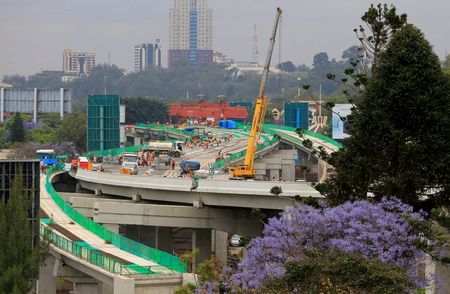
African Nations Mend and Make Do as China Reduces Funding for BRI

Deep in Kenya’s Great Rift Valley, members of the National Youth Service tirelessly swing machetes to clear dense shrubs obscuring railway tracks more than a century old. It’s a distinctly low-tech phase for China’s Belt and Road drive in Africa to create the trade highways of the future. There’s not enough money left to complete the new 1,000-km super-fast rail link from the port of Mombasa to Uganda. It ends abruptly in the countryside, 468 km short of the border, and now Kenya is resorting to finishing the route by revamping the 19th-century colonial British-built tracks that once passed that way.
China has lent African countries hundreds of billions of dollars as part of President Xi Jinping’s Belt and Road Initiative (BRI) which envisaged Chinese institutions financing the bulk of the infrastructure in mainly developing nations. Yet the credit has dried up in recent years. On top of the damage wrought to both China and its creditors by COVID-19, analysts and academics attribute the slowdown to factors such as a waning appetite in Beijing for large foreign investments, a commodity price crash that has complicated African debt servicing, plus some borrowers’ reluctance to enter lending deals backed by their natural resources.
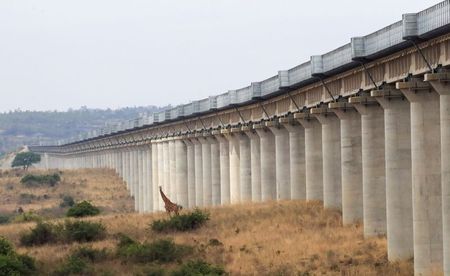
A giraffe walks near an elevated railway line that allows movement of animals below the Standard Gauge Railway, in Nairobi
“We are not in the go-go period anymore,” Adam Tooze, a Columbia University historian, said about China’s overseas investment projects. “There is definitely a rebalancing from the China side,” said Tooze, whose new book Shutdown examines how COVID-19 affected the world economy, adding that Beijing’s current account surplus was “dwindling somewhat”.
Chinese investments in the 138 countries targeted by BRI slid 54% from 2019 to $47 billion last year, the lowest amount since the BRI was unveiled in 2013, according to Green BRI, a China-based think-tank that focuses on analysing the initiative. In Africa, home to 40 of those BRI nations, Chinese bank financing for infrastructure projects fell from $11 billion in 2017 to $3.3 billion in 2020, according to a report by international law firm Baker McKenzie. This is a blow for governments who were anticipating securing Chinese loans to build highways and rail lines linking landlocked countries to sea ports and trade routes to Asia and Europe. The continent is facing an estimated annual infrastructure investment deficit of around $100 billion, according to the African Development Bank.
“The pandemic has actually made things worse. Those numbers will go up,” said Akinwumi Adesina, the president of the bank, citing the need for additional infrastructure to support health services. Hold-ups have hit some other BRI projects across the continent, such as a $3 billion Nigerian rail project and a $450 million highway in Cameroon.
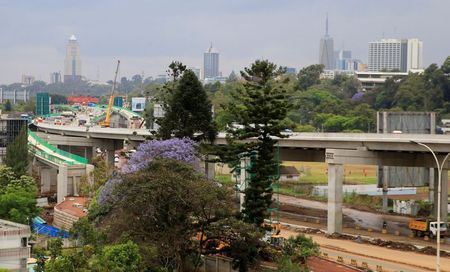
Workers are seen on site during the construction of the Nairobi Expressway, in Nairobi
Beijing officials have said that the two sides have a mutually beneficial and cooperative relationship and that lending is done openly and transparently. “When providing interest-free loans and concessional loans, we fully consider the debt situation and repayment capacity of the recipient countries in Africa, and work in accordance with the law,” Zhou Liujun, vice chairman of China International Development Cooperation Agency told reporters in late October. Another Chinese official, who declined to be named as they are not authorised to speak to the media, said Beijing always intended to implement BRI gradually to manage debt default risks by countries or projects.
Railway Will be Built
Officials in Kenya said its rail route were long-term projects that would be seen through over time, without giving any specific timeframe. The COVID-19 has presented the world with unforeseen and unprecedented challenges, they added. “Eventually, this standard gauge railway will still be complete because it is part of what we call the Belt and Road Initiative,” said James Macharia, Kenya’s transport minister.
The government has already spent about $5 billion on its new rail link, and can’t currently afford the additional $3.7 billion needed to finish it. The last station hooked up is only accessible by dirt roads. Hence engineers in the Rift Valley are no longer building new infrastructure, but rather shoring up colonial-era viaducts and bridges in an operation that the government estimates will cost about 10 billion shillings ($91 million). There are knock-on effects and, over the border in Uganda, construction on a modern railway line has been delayed because it’s supposed to link to the Kenyan one. That has been one factor in the hold-up in a $2.2 billion loan from the Export-Import Bank of China (Exim Bank), David Mugabe, spokesperson for Uganda’s Standard Gauge Railway project, told Reuters.
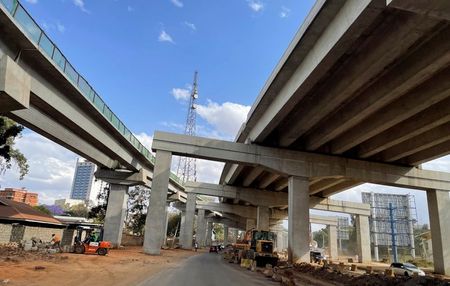
A view shows part of a construction site of the Nairobi Expressway, in Nairobi
In Nigeria, the government turned to London-headquartered Standard Chartered Bank this year to finance the $3 billion railway project https://www.reuters.com/article/nigeria-railway-funding-idUKL5N2OE43A initially slated to receive Chinese backing. Standard Chartered declined to comment on the deal, citing confidentiality agreements. In Cameroon, the $450 million highway linking the capital Yaounde and the economic hub of Douala, whose funding was secured from China’s Exim Bank in 2012, stalled in 2019 as the bank stopped disbursing further tranches of the loan. Exim Bank did not respond to a request for comment on its loans to Uganda and Cameroon.
Malaysia to Bolivia
Zhou Yuyuan, Senior Research Fellow at the Centre for West Asian and African Studies at the Shanghai Institutes for International Studies, said the COVID-19 crisis had strained Chinese lending institutions and African finances alike. In future, he added, Beijing was likely to encourage more corporate Chinese investment in the continent, to fill the role of state-backed financing. “Once the pandemic is over, Africa’s economy is likely to recover,” he said. “That could drive China’s corporate investment.”
The pandemic has added to the obstacles facing President Xi’s self-described “project of the century”. After peaking at $125.25 billion in 2015, Chinese investments into BRI nations have dropped every year, apart from 2018, when they edged up 6.7%, the Green BRI data showed. In 2018, Pakistan https://www.reuters.com/article/us-pakistan-silkroad-railway-insight-idUSKCN1MA028 balked at the cost and the financing terms of building a railway. The previous year, there were signs of growing problems for BRI, after China’s push in Sri Lanka https://www.reuters.com/article/us-sri-lanka-china-insight-idUSKBN15G5UT sparked protests.
AidData, a research lab at the College of William and Mary in the United States, said in a study https://www.reuters.com/world/china/chinas-belt-road-plans-losing-momentum-opposition-debt-mount-study-2021-09-29 at the end of September that $11.58 billion in projects in Malaysia had been cancelled over 2013-2021, with nearly $1.5 billion cancelled in Kazakhstan and more than a $1 billion in Bolivia. “A growing number of policymakers in low and middle-income countries are mothballing high-profile BRI projects because of overpricing, corruption and debt sustainability concerns,” said Brad Parks, one of the study’s authors. China’s foreign ministry said in response to the AidData report that “not all debts are unsustainable”, adding that since its launch the BRI had “consistently upheld principles of shared consultation, shared contributions and shared benefits”.

A view shows part of a construction site of the Nairobi Expressway, in Nairobi
‘Resources are Finite‘
In late 2018, Beijing agreed to restructure billions of dollars in debt owed by Ethiopia. Some African governments are also growing more reluctant to take out loans backed commodities such as oil and metals. “We can’t mortgage our oil,” Uganda’s works and transport minister Katumba Wamala told Reuters, confirming the country had refused to pledge untapped oil in fields in the west to secure the railway loan.
The finance squeeze means African governments must make more strategic investment decisions in terms of debt sustainability, said Yvette Babb, a Netherlands-based fixed income portfolio manager at William Blair. “There is no infinite amount of capital,” she said. A key problem is debt sustainability. Copper producer Zambia became Africa’s first pandemic-era sovereign default last year after failing to keep up with payments on more than $12 billion of international debt, for example. A recent study suggested more than half of that burden is owed to Chinese public and private lenders.
********************************************************************************************************************
By Duncan Miriri for Reuters
Disclaimer
The opinions expressed in this article are the author’s own and do not reflect the views of Chanakya Forum. All information provided in this article including timeliness, completeness, accuracy, suitability or validity of information referenced therein, is the sole responsibility of the author. www.chanakyaforum.com does not assume any responsibility for the same.
Chanakya Forum is now on . Click here to join our channel (@ChanakyaForum) and stay updated with the latest headlines and articles.
Important
We work round the clock to bring you the finest articles and updates from around the world. There is a team that works tirelessly to ensure that you have a seamless reading experience. But all this costs money. Please support us so that we keep doing what we do best. Happy Reading
Support Us



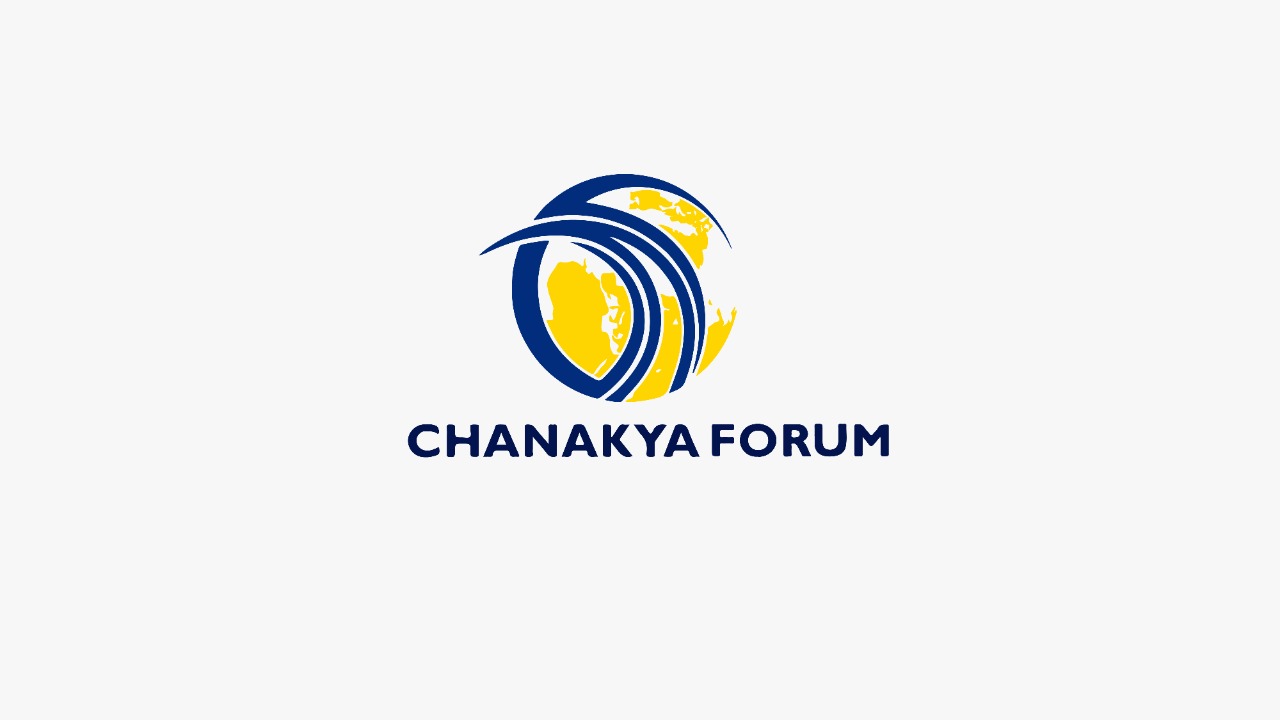

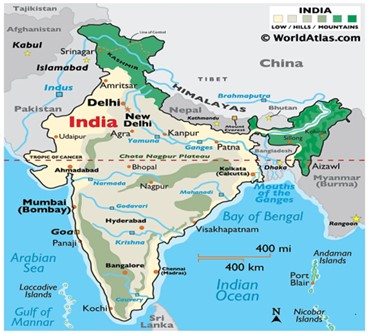















POST COMMENTS (0)